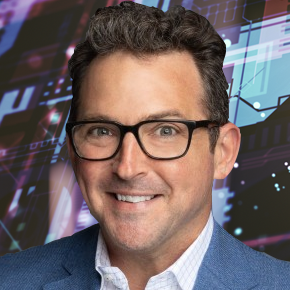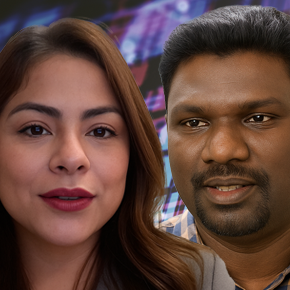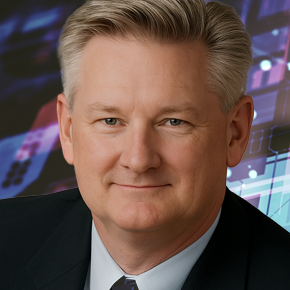February 24, 2023
Hiring Labor for Digital Transformation

Transcript
2 Problems Causing Labor Shortage in Manufacturing
The typical manufacturing enterprise does not have the labor it needs to handle digital transformation.
There are several problems leading to the labor shortage in manufacturing.
- The workforce is aging and there simply are not enough skilled workers to replace the people in manufacturing jobs who will age out in the next 10 to 20 years.
- In order to stay competitive, the manufacturing workforce must be able to work with the technologies that support digital transformation.
To solve these problems, something has got to change both in the way we manufacture and in the way we hire workers for manufacturing.
Today I’m going to talk about this from a labor perspective. My guest is the CEO of Talroo, a data-driven hiring platform. Thad Price has been a thought leader in online recruitment for the past 17 years, over which time he’s seen the industry change even as it continues to change today.
Thad Price, welcome to the podcast.
Thad Price: Great to be here.
Hiring and Manufacturing are Both Digital
Leah Archibald: The industry that you’re in, which you’d call recruitment, has been transforming digitally over the past twenty years. Simultaneously, the industries that you serve have also been transforming digitally. So as the hiring market came online, so did the manufacturing industry. And now the labor that we’re trying to source needs an increased skillset in online operations. So how does that affect the sourcing of candidates for a position? How does that add to the needed skillset that applicants need to have? And how does that affect the processes that hiring managers need to go through to vet the right candidates?
Thad Price: That’s a very loaded question, but I’m happy to give my perspective on it. When you think of the idea of hiring, you think of ensuring that you have the right team members to build your team, to grow your company, and to take your company to the next level. One of the most important pieces is value alignment. In this world, skills are constantly changing. Automation is needed. It’s about ensuring that you are finding the right talent to be able to grow your business. It’s not so much specific on the skills.
In many cases, given how the market is changing, a lot of companies probably fall into a hiring gap because they lack learning and development internally. In a tight labor market like we have right now, it’s very hard. And so, a piece of the sourcing strategy and a piece of the recruitment strategy is this idea of learning and development and hiring for fit. Then upskill within the company.
Leah Archibald: I really love how you got to my question underneath my question. Because it’s not so much about answering, “Do they have that skill? Have they studied the software?” It’s really about change management for the whole organization. And that includes the personnel.
So when we think about implementing a software solution or a digital transformation solution for an organization, we’re not just talking about the software. We’re talking about change management. It’s a mind shift to say “How do you build a team that can change for the future?” rather than “How do you build the exact team you need right now?”
Thad Price: It’s the idea of being proactive instead of reactive. And so much of hiring today is very reactive. And I think the better way, especially in industries that are being disrupted, whether it’s through software, automation, robots, whatever may be happening, I think the idea is to build this candidate pipeline to be proactive in where you see your business going. If you’re more proactive and you have this pipeline of candidates that are a great fit for your business, that can help take your business to the next level. If you’re providing all the training needed to be successful in your role, it’s exactly what people are looking for.
Leah Archibald: A lot of manufacturing CEOs have been saying over the past several months that their biggest problem is labor. They just don’t have the skilled manufacturing labor to run the same machines at the same rate that they’ve done over the past 30 years. And we’re saying: Yes! That’s why you’ve got to innovate!
2 Ways Manufacturing Can Address the Lack of Skilled Labor
Leah Archibald: Tell me how you see the industry addressing this challenge of lack of skilled manufacturing labor.
Thad Price: There are a couple of ways the industry is addressing the lack of skilled labor.
- The first is to hire for fit and then train. There are companies making a lot of waves there.
- The second thing is more relationships with trade schools. That’s very important overall. I think if you’re a local facility and you don’t have a relationship with a local trade school, it’s a huge opportunity for you to ensure that you have a feeder of applicants and skilled labor available where you can ensure they’re trained in the way that you want them to be trained.
That’s great for the economy. That’s terrific for the candidate. And of course, it’s fantastic for the business.
Leah Archibald: There certainly is a peak in interest right now in how manufacturing is being taught in educational institutions. This makes me very hopeful, not just for the future of young college graduates, but for the future of the industry as a whole getting labor that’s integrated into the transformative processes. This is what’s needed to make digital transformation accelerate and not slow down over the next 5 to 10 years.
I think this brings me into my next question. What are the table stakes today for manufacturers to be able to track and retain talent?
Thad Price: The first that I usually share with customers is: audit your process. The first thing you need to do is to ensure that you have your stages tracked, and that you understand the percentages through every stage in the recruiting funnel. Once you have that, then you can set some goals and you can look at technology to help improve the conversion metrics. A great example is this is: if you have a job or a req that you’ve opened, and your conversion from offer to hire is lower than other reqs, or lower than your other positions that you have open, then it begs the question: what is it? Is it pay? Is it something else? Is it the hiring manager? All of these things are very important when you’re looking at how to improve your hiring efficiency.
Leah Archibald: I love your answer because it’s exactly the same thing that we say in manufacturing. You have to have a platform that gives you all the data. You can’t track whether you’re hitting your KPIs unless you have that system in place for data. Unless you have everything in your aPriori system with your end-to-end digital thread, you have no idea what you’re dealing with.
Thad Price: Absolutely right. The best software in the world empowers people. And once you empower people, you can be more effective as a business. Productivity increases. It’s all about the idea of leading the charge through data.
Leah Archibald: Well, I have to say, Thad Price, this has been a very productive conversation. Thank you so much for joining me on the podcast.
Thad Price: Thank you so much for having me.








